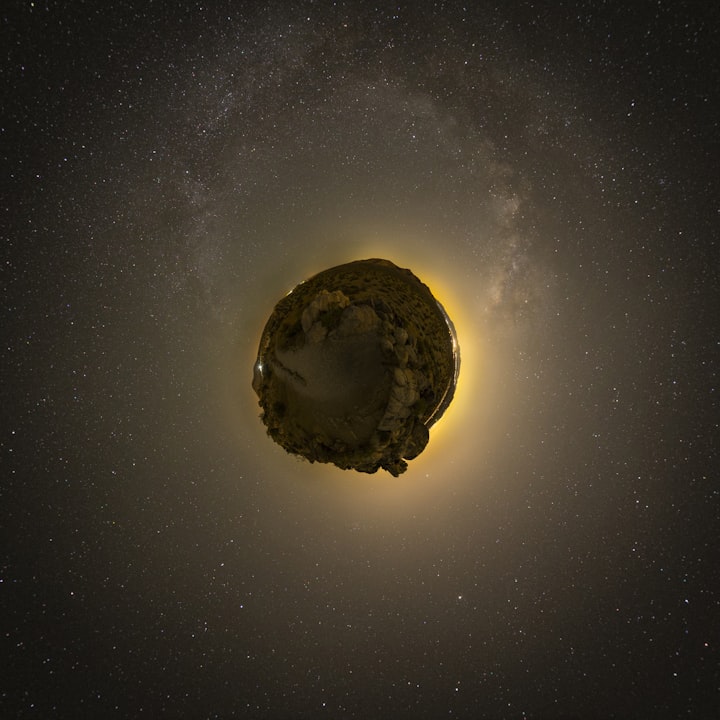Astronomers Uncover the 'Ideal Challenge' While Analyzing Asteroid Samples
Astronomy's Latest Breakthrough Reveals Surprising Insights from Asteroid Exploration

Researchers have taken their most memorable look at an example gathered from the close Earth space rock Bennu — and coincidentally found a decent piece more than they anticipated.
At the point when they opened the canister containing the example on September 26, the specialists found an overflow of dull, fine-grained material within the holder's top and base encompassing the system used to gather the extraterrestrial shakes and soil. That startling flotsam and jetsam could uncover key experiences about the space rock before the essential example is dissected.
The example's notable arrival in the Utah desert September 24 denoted the climax of NASA's 7-year OSIRIS-Rex mission, which went to Bennu about 200 million miles (320 million kilometers) from Earth, landed on the space rock and afterward flew back by Earth for the example drop. (All out trip distance: a few 3.86 billion miles.)
The mission group whisked away the canister the day after its appearance to NASA's Johnson Space Center in Houston, which has a perfect room extraordinarily worked for cautious examination of the enormous example.
What the Bennu test could uncover
Space rocks are leftovers from the development of the planetary group, offering experiences into what those turbulent, early days resembled as the planets framed and subsided into place. Yet, close Earth space rocks likewise represent a danger to our planet, so understanding their organization and circles is critical to opening the most effective ways to divert space rocks on a crash course with Earth.
At the point when OSIRIS-REx momentarily utilized its TAGSAM, or Tricky Example Securing Component head, to upset the outer layer of Bennu and gather an example in October 2020, it assembled such a lot of material that particles should have been visible gradually floating off into space before the head was stashed in the canister.
This persuaded researchers to think they could possibly do a fast examination of any material they found after opening the canister — and there's a lot of it before they even arrive at the main part of the example, situated inside the system head, and that implies the researchers should take as much time as is needed to gather the entirety of the material.
"The absolute best 'issue' to have is that there is such a lot of material, it's taking more time than we expected to gather it," said Christopher Snead, delegate OSIRIS-REx curation lead, in an explanation.
"There's a great deal of plentiful material external the TAGSAM head that is fascinating by its own doing. Having all that material there is truly stupendous."
The moon slides across the sun, showing a blasting corona of light, during an annular shroud at a waterfront park in Yokohama, close to Tokyo, Monday, May 21, 2012. A great many Asians looked as an intriguing "ring of fire" obscure crossed their skies early Monday. The annular obscuration, where the moon passes before the sun leaving just a brilliant ring around its edges, was noticeable to wide regions across the mainland. (AP Photograph/Shuji Kajiyama)
The most effective method to see the last 'ring of fire' obscure until 2046
The genuine space rock test will not be uncovered until October 11 in a live NASA broadcast. The TAGSAM head will be moved to a new specific glovebox for cautious dismantling, revealing the example inside.
In the interim, the brief glance examination of an example taken from outside the TAGSAM head is in progress, and it could offer starting discoveries from the material gathered from Bennu.
"We have all the microanalytical strategies that we can toss at this to super destroy it, practically down to the nuclear scale," said Lindsay Keller, OSIRIS-REx test examination colleague, in an explanation.
The group will utilize checking electron magnifying lens, X-beams and infrared instruments for a first assessment of the material gathered from Bennu.
Together, the instruments will give researchers a comprehension of the example's compound structure, recognize any hydrated minerals or natural particles, and uncover any overflow of explicit sorts of minerals present on the space rock.
"You have truly first class individuals and instruments and offices that will be hitting these examples," Keller said.
The underlying examination will assist specialists with having a superior thought of what's in store from the mass example gathered from Bennu.
Researchers accept that space rocks like Bennu could have conveyed important components, for example, water to Earth right off the bat in our planet's development — and concentrating on the unblemished example could respond to waiting inquiries regarding the starting points of our planetary group.
In the mean time, the rocket that conveyed the example, presently named OSIRIS-Peak, is en route to concentrate on the close Earth space rock Apophis, which will come close to the point of Earthing in 2029 to be seen by the unaided eye.





Comments (1)
very good writing.. Also very informative news!